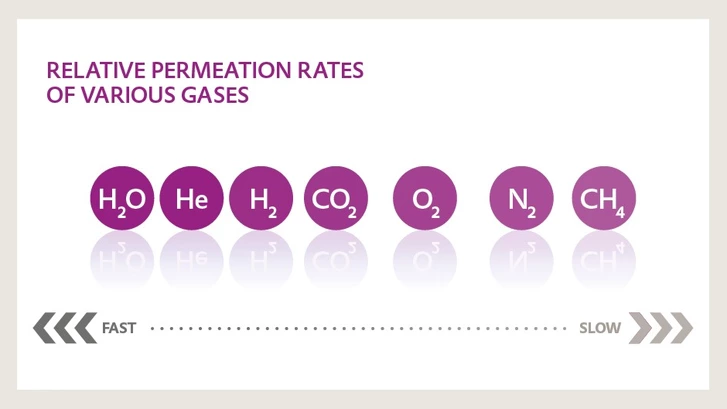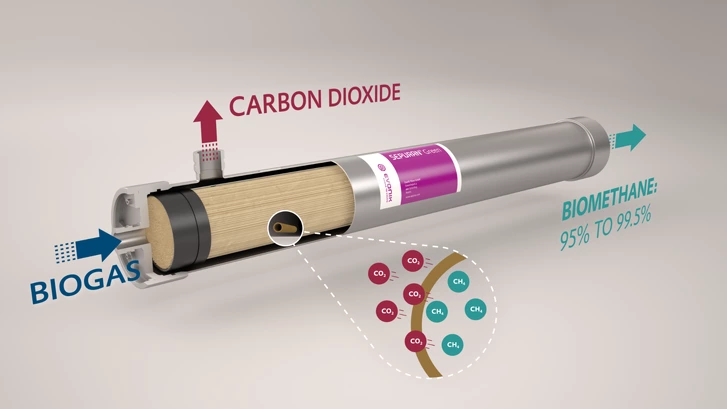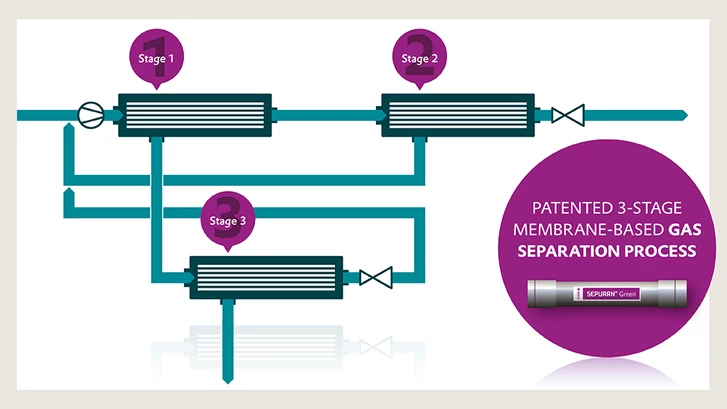
Biomethane as fuel
Environmental advantage through biomethane
Biomethane is considered an environmentally friendly energy source. It can be used to generate heat or as a climate-neutral fuel. Before biomethane is fed into the natural gas grid, extensive purification is necessary. SEPURAN® Green hollow fibre membranes from Evonik process biogas simply and efficiently into high-purity biomethane to make it decentral available as a renewable energy source.
Today‘s enormous potential for bioenergy from forestry and timber, agricultural raw and residual materials, and organic waste streams can make a major contribution to greenhouse gas emission savings. Specifically, biogas and biomethane upgraded from these sources is essentially sustainably produced renewable natural gas from organic (residual) recyclables with significant energy potential. For this reason, biomethane can make a significant contribution to alternative energies without competing for substrates with the production of food and feed.
Biogas and biomethane production technologies are well developed and economically viable. In the last five to ten years, the efficiency of biomethane upgrading plants has improved significantly, which benefits plant economics.
The gas produced offers a climate-neutral alternative to fossil natural gas and is available with equivalent potential. Necessary electricity for the operation of biogas (upgrading) plants should be provided as CO2-neutral and sustainably as possible. The CO2 captured during biomethane production can be reused industrially or in agricultural production. Unused CO2 does not have a negative impact on the greenhouse effect, as it is not of fossil origin and therefore does not affect the carbon balance in the way that fossil CO2 does.
BIOMETHANE TECHNOLOGY AND INFRASTRUCTURE IN PLACE

Despite existing gas grid infrastructure, the potential of biomethane remains to be fully exploited. In order to reduce greenhouse gas emissions and achieve the set climate targets, biomethane could contribute significantly to reduce greenhouse gas emissions and achieve the set climate targets along the value chain. The technology for production and distribution as well as the infrastructure is already in place and available.



EFFICIENT BIOGAS UPGRADING USING MEMBRANES
Various technologies are available for separating CO2 from the raw biogas and upgrading it to biomethane. In addition to wellknown technologies such as pressurized water scrubbing, amine scrubbing or pressure swing absorption, membrane technology has become increasingly established in recent years. Thanks to highly efficient and highly selective membranes, it is possible to separate CO2 almost completely from methane.
Polyimide membranes are the most widely used membrane treatment systems. At the turn of the century, membrane processes were still struggling with a lack of efficiency in terms of yield and selectivity, but this disadvantage has been eliminated by improved process control and improved selectivity thanks to new polymer solutions.
Evonik has been producing high-performance polyimide-based plastics since the 1980s, which in turn are processed into high-performance filter materials. In the form of filter bags, these are used very successfully in flue gas cleaning, for example. The basis of this success is, among other things, the high resistance to temperature and pollutants in the flue gas. Filtering or separating is also the main task in the new field of application of this high-performance polyimid. The corresponding polyimide and its properties have been modified and further developed accordingly in order to separate gas molecules from each other in a new field of application instead of dusts from flue gas.
EXPERTISE IN POLYMER PROCESSING
The decisive factor here is not only the right material, but also the shape of the filters. For this purpose, it is necessary to spin the polymer into fine hollow fibres and at the same time create properties that enable the separation of gas mixtures such as nitrogen and oxygen or methane and CO2 from each other in a highly efficient and energy-saving manner. Gas separation using membrane technology takes advantage of the different molecular sizes and molecular interactions. Membrane cartridges and modules are manufactured from these hollow fibre membrane bundles, which are used as membrane systems for gas separation.
HIGH PURITY BIOMETHANE WITH 3-STAGE INTERCONNECTION
In the biogas upgrading process, the raw gas is compressed and fed into the interior of the hollow fibre membrane (feed side), the CO2 is mainly directed to the outside (permeate side) due to the properties of the membrane, the methane collects at the end of the membrane (retentate side) in a highly concentrated form. By means of multi-stage interconnection it is possible to achieve a separation of the gas mixture of nearly 100%, usually the methane is available with a purity of >95% and CO2 with a purity of >99%. Depending on the application, higher purities are also possible.
A small part of the biogas upgrading plants with SEPURAN® membranes realized overseas in the last years were equipped with a 2-stage membrane process. The desired product quality can be adjusted as desired, but due to the accompanying methane loss, this interconnection is not sufficient for European standards. On the European continent, the 3-stage treatment process has been used throughout due to the highest efficiency in the use of the SEPURAN® Green Membrane. Here, stage 1 and stage 2 are connected in series, but stage 3 is connected in parallel to stage 1. With this configuration, it was possible for the first time to obtain a very pure product with the highest methane yield using only one compressor.



